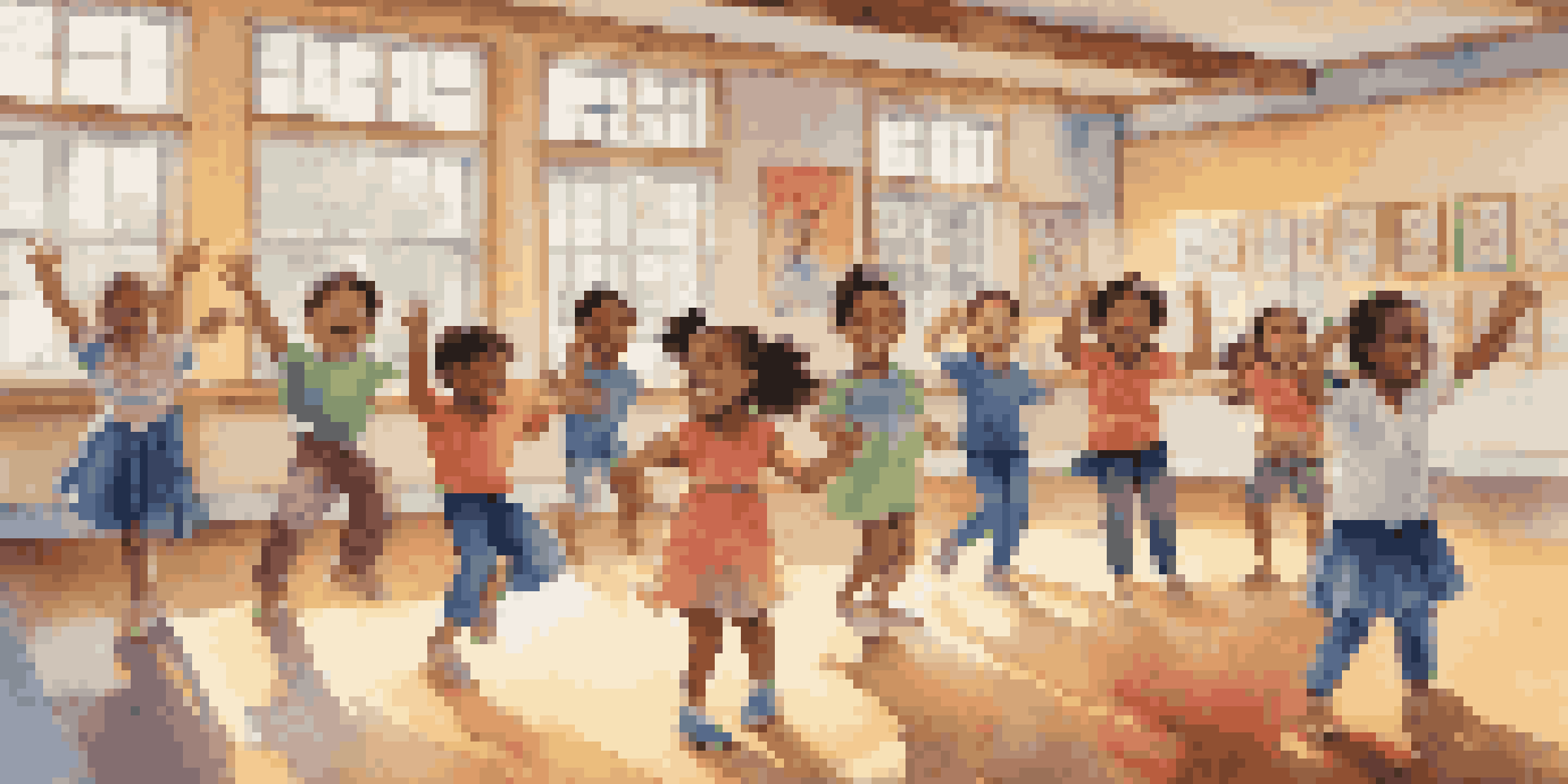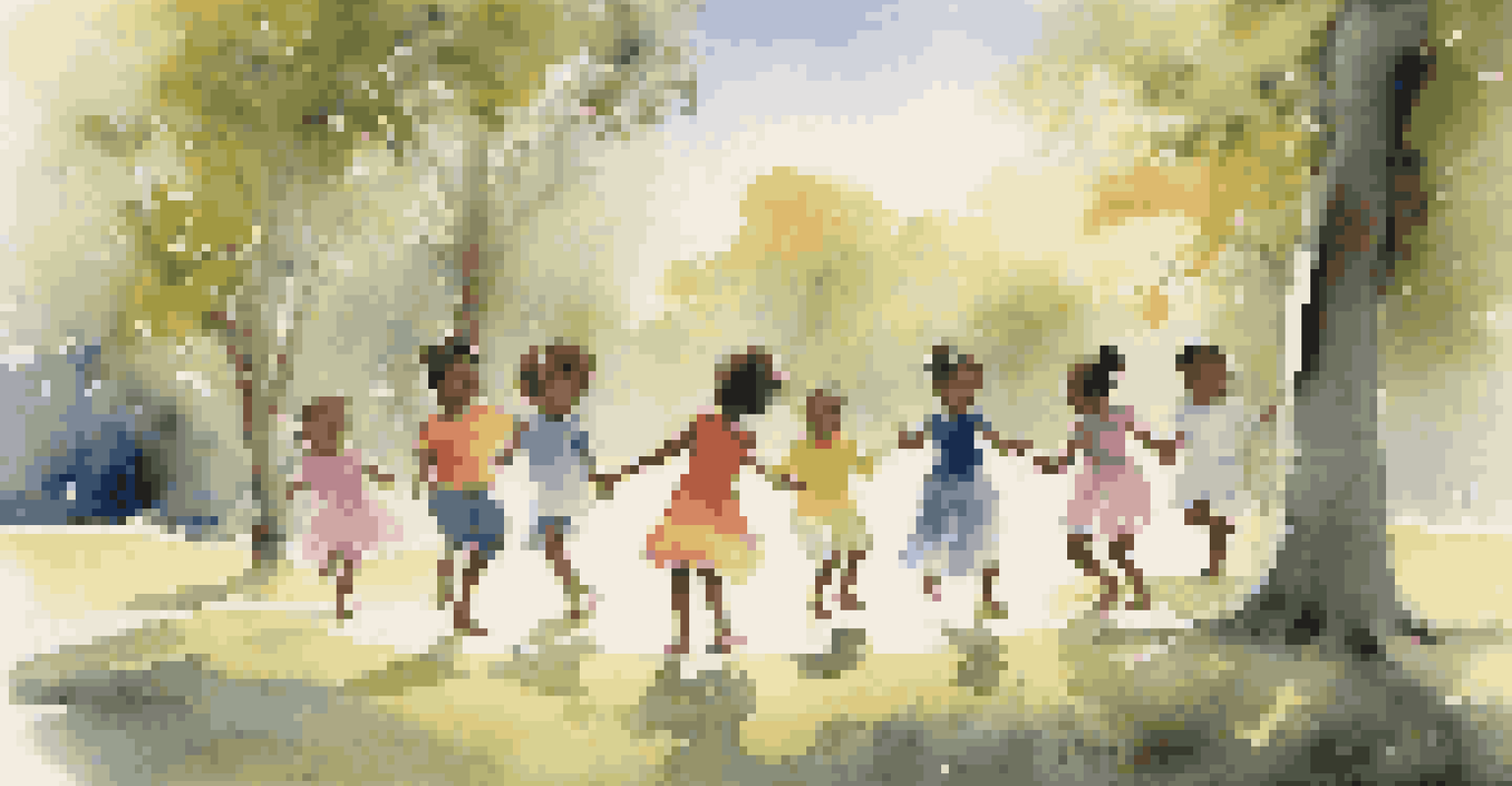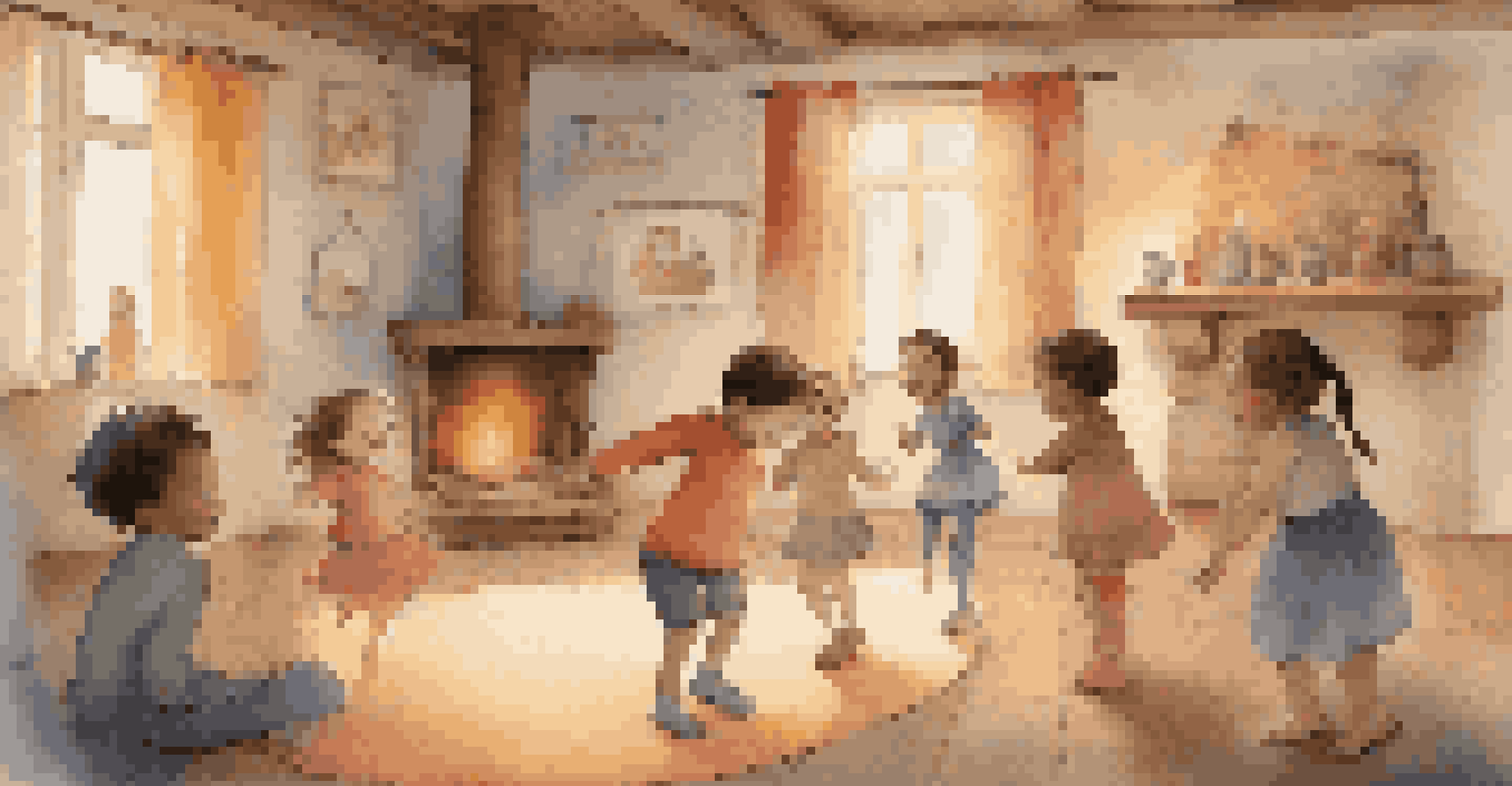Using Dance to Teach Emotional Expression in Play

The Power of Dance in Emotional Learning
Dance is more than just an art form; it’s a powerful tool for emotional expression. Through movement, children can convey feelings that they might struggle to put into words. This is especially important in a world where emotional literacy is key to social interactions and personal well-being.
Dance is the hidden language of the soul.
When children engage in dance, they tap into their emotions, allowing them to express joy, sadness, anger, or excitement. This physical form of expression can often be more impactful than verbal communication, particularly for young learners who are still developing their vocabulary.
By incorporating dance into educational settings, teachers can create a rich environment where emotions are acknowledged and explored. This not only helps in emotional development but also fosters a sense of community and connection among peers.
Creating a Safe Space for Expression
To effectively use dance for emotional expression, it’s vital to establish a safe and supportive environment. Children should feel free to move without judgment, which encourages them to express their true feelings. This can be achieved through warm-up activities that promote trust and encourage vulnerability.

Using games and improvisational dance can help break down barriers. Activities such as 'mirror dance' or 'emotion charades' allow children to explore different movements that reflect various emotions, fostering creativity and spontaneity.
Dance Enhances Emotional Expression
Through movement, children can convey complex feelings, providing a vital outlet for emotional literacy.
When children know they are in a safe space, they’re more likely to take risks with their emotional expression. This openness not only enhances their dance experience but also builds confidence in their ability to communicate feelings.
Incorporating Storytelling with Dance
Integrating storytelling into dance can deepen emotional expression even further. Stories can evoke specific feelings, and when children dance to represent these emotions, they develop a strong connection with their movements. This connection helps them understand and articulate their emotions better.
The body says what words cannot.
For example, a story about a lost puppy can inspire movements that convey sadness, longing, or even joy when the puppy is found. By physically embodying these emotions, children learn to empathize with characters and relate them to their own experiences.
Storytelling through dance not only enhances emotional expression but also improves listening skills and comprehension. As children interpret narratives through movement, they engage their imaginations, making the learning process immersive and enjoyable.
Dance as a Tool for Conflict Resolution
Dance can also serve as an effective tool for conflict resolution among children. When conflicts arise, emotions can run high, making it difficult for children to communicate effectively. Introducing dance as a means to express these emotions can help diffuse tension and encourage dialogue.
For instance, a 'dance it out' session can provide a platform for children to express their frustrations or disagreements through movement. This allows them to release pent-up emotions in a healthy way and fosters a sense of understanding among peers.
Safe Spaces Foster Expression
Creating a supportive environment allows children to express their emotions freely, enhancing their confidence and communication skills.
By learning to express their feelings through dance, children develop essential skills in communication and empathy. They begin to recognize that it’s okay to feel different emotions and that there are constructive ways to address conflicts.
The Role of Rhythm in Emotional Expression
Rhythm plays a crucial role in both dance and emotional expression. Different beats and tempos can evoke various feelings, from excitement to calmness. By experimenting with rhythm, children can learn to express their emotions in a nuanced way.
For instance, fast-paced music might inspire energetic movements that reflect happiness or excitement, while slower melodies can facilitate more introspective movements representing sadness or contemplation. This exploration helps children understand how rhythm influences their feelings and expressions.
Encouraging children to choose the music they resonate with can also enhance their emotional connection. When they dance to songs that reflect their current mood, they are more likely to express authentically, making the dance experience deeply personal.
Building Social Bonds Through Dance
Dance is inherently social, making it an excellent way for children to bond with their peers. Group dance activities encourage collaboration and teamwork, helping children to express emotions collectively. This shared experience can lead to deeper friendships and a greater understanding of each other’s feelings.
Participating in partner dances or group choreographies allows children to communicate non-verbally, fostering trust and cooperation. As they work together to create movements, they learn to be attuned to their peers' emotional states and respond appropriately.
Reflection Boosts Emotional Growth
Encouraging children to reflect on their dance experiences solidifies their emotional understanding and expression.
These social interactions through dance can help children develop vital social skills, such as empathy, active listening, and conflict resolution. Building these skills early on will serve them well throughout their lives, both personally and professionally.
Reflection: The Key to Emotional Growth
After engaging in dance activities, reflection plays a critical role in emotional growth. Encouraging children to share their feelings about their dance experience can help them process their emotions more effectively. This practice not only reinforces what they’ve learned but also helps them articulate their feelings in a safe space.
Reflection can take many forms, such as group discussions, journaling, or even guided movement sessions. These activities allow children to explore their emotions further and recognize patterns in how they express themselves.

Ultimately, reflection serves as a bridge between the dance experience and emotional understanding. It solidifies the lessons learned through movement and empowers children to use dance as a lifelong tool for emotional expression.